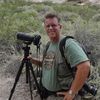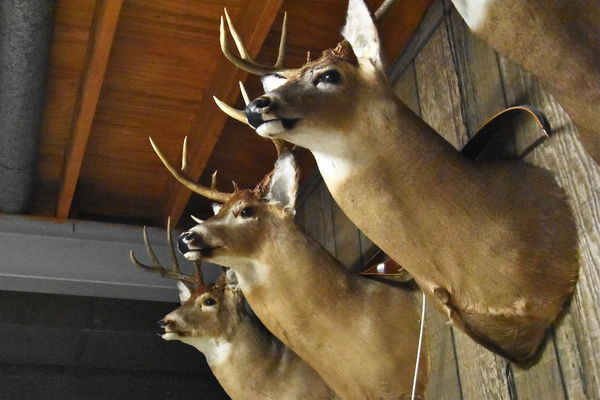Why are low iso settings best?
Apr 7, 2017 05:41:12 #
dgolfnut wrote:
I have read many posts and watched instructional videos and almost every pro says using ISO settings below 200 is where they prefer to shoot -- even in dark conditions. I understand that very high ISO settings tend to introduce noise, but going up to 1200 or 2400 with a camera that goes up to 12000 seems like it should not be a problem. Why do so many limit their ISO below 200?
Sensor characteristics (i.e., sensitivity, signal to noise ratio, dynamic range, tonal range, color, etc.) all degrade as the ISO increases. There is a threshold where it becomes noticeable and varies according to your standards. This also varies with camera brands and sensor size; larger sensors are usually better.
Some of it is correctable in post processing.

Apr 7, 2017 05:57:56 #
dgolfnut wrote:
Thanks all. So I tried the experiment in my dimly lit living room from iso 200 to 3200 and the best looking shot on my computer monitor was iso 1600 (which happens to be what the automatic ISO setting chose). I didn't notice any objectionable noise but at iso 200 the shot was blurry as the exposure was .5 sec @ f2.5. Interesting.
Yeah, it's hard to hold it steady at those speeds. Experiment with a tripod.
Apr 7, 2017 06:07:05 #
dgolfnut wrote:
Thanks all. So I tried the experiment in my dimly lit living room from iso 200 to 3200 and the best looking shot on my computer monitor was iso 1600 (which happens to be what the automatic ISO setting chose). I didn't notice any objectionable noise but at iso 200 the shot was blurry as the exposure was .5 sec @ f2.5. Interesting.


Apr 7, 2017 06:28:09 #
dgolfnut wrote:
I have read many posts and watched instructional videos and almost every pro says using ISO settings below 200 is where they prefer to shoot -- even in dark conditions. I understand that very high ISO settings tend to introduce noise, but going up to 1200 or 2400 with a camera that goes up to 12000 seems like it should not be a problem. Why do so many limit their ISO below 200?
Not best but better but not at the cost of needed shutter speed of aperture settings.
Apr 7, 2017 07:11:11 #
Alpix
Loc: Cambridgeshire, UK
As has been mentioned, it's the signal to noise ratio.
All things being equal, lower ISO will produce a more accurate image.
Think of each pixel as being a solar cell, converting light into electricity.
At low light levels (when we use a higher ISO), we are actually amplifying the signal (and noise).
So when the light (signal) is low, the noise is a bigger percentage of the final signal produced.
This is why putting more pixels into the same space of the cameras sensor, produces smaller 'solar panels', less signal and more noise.
There is a trade off between the amout of pixels vs noise in cameras, hence many expensive cameras are relatively low resolution (and noise).
Having less pixels in the same area ie bigger pixels (solar panels) helps produce a bigger voltage, and the noise is then very small in comparison.
There is a feature on some cameras to reduce noise on long exposures, by taking the shot, then comparing it to a 'blank' shot from the sensor, and removing the difference. This was an old technique used in radio too. Transmit 2 signals, receive it twice, and remove the difference to help reduce background noise.
All things being equal, lower ISO will produce a more accurate image.
Think of each pixel as being a solar cell, converting light into electricity.
At low light levels (when we use a higher ISO), we are actually amplifying the signal (and noise).
So when the light (signal) is low, the noise is a bigger percentage of the final signal produced.
This is why putting more pixels into the same space of the cameras sensor, produces smaller 'solar panels', less signal and more noise.
There is a trade off between the amout of pixels vs noise in cameras, hence many expensive cameras are relatively low resolution (and noise).
Having less pixels in the same area ie bigger pixels (solar panels) helps produce a bigger voltage, and the noise is then very small in comparison.
There is a feature on some cameras to reduce noise on long exposures, by taking the shot, then comparing it to a 'blank' shot from the sensor, and removing the difference. This was an old technique used in radio too. Transmit 2 signals, receive it twice, and remove the difference to help reduce background noise.
Apr 7, 2017 07:21:04 #
What I use for ISO depends on what I am shooting. Landscapes Native 100-200 depending on the camera. Wildlife 640-1250 depending on the sky cover. Night time sky 1000-3200.
There are ways to decrease noise in PP and that is what I do. I want the image will worry about noise later
There are ways to decrease noise in PP and that is what I do. I want the image will worry about noise later
Apr 7, 2017 07:22:54 #
The higher the ISO the greater the noise will be, so I try to shoot with the lowest ISO that I can. Still, if the lighting is not adequate to get the shot you want then a bit of noise seems a better alternative than to miss the shot entirely.
Apr 7, 2017 08:44:28 #
it's about the level of image quality you are after, and what iso you need to get the shot. back in the day we had asa or iso as low as 12, 32, and 64. most of us used 100,and 200 and 400 when it came on the market. when pushing came on the scene many of us went crazy. now we do it by pressing a button.
Apr 7, 2017 09:29:36 #
dgolfnut wrote:
I have read many posts and watched instructional videos and almost every pro says using ISO settings below 200 is where they prefer to shoot -- even in dark conditions. I understand that very high ISO settings tend to introduce noise, but going up to 1200 or 2400 with a camera that goes up to 12000 seems like it should not be a problem. Why do so many limit their ISO below 200?
This, like many other things you will read, has a certain amount of mythology baked in. The first digital cameras that came out had noisy sensors - electrical chatter induced by the amplification of the signal when the sensitivity was cranked up. A little of this mythology was carried over from film, where the slowest film, ASA100, was finer grained than the faster ASA films. The modern sensors have decreased the noise level significantly, so that noise is not a problem until you hit the higher ISO's and it varies with the sensor. But the purists will still tell you that unless you have the largest, latest, heaviest, most expensive and fastest, and use the lowest ISO, you will not get the "best" photos. Take it with a grain of salt!
Apr 7, 2017 09:35:42 #
rb61
Loc: Maple Grove, MN
mcveed wrote:
Try the experiment again, this time with the camer... (show quote)
I feel that this is a much better way to test, for most of your image making, than using a low light level scene.
Apr 7, 2017 09:45:22 #
CatMarley wrote:
This, like many other things you will read, has a ... (show quote)
Agreed. But even the latest cameras will show noise at higher ISO ratings and different cameras will behave differently. With my A6000 I find that ISO 800 works without very noticeable noise and even ISO 1600 is not too bad but with my previous camera ISO 800 was very noisy.
When I can, however, I keep the ISO at 400 or less.
Apr 7, 2017 09:46:14 #
dgolfnut wrote:
I have read many posts and watched instructional videos and almost every pro says using ISO settings below 200 is where they prefer to shoot -- even in dark conditions. I understand that very high ISO settings tend to introduce noise, but going up to 1200 or 2400 with a camera that goes up to 12000 seems like it should not be a problem. Why do so many limit their ISO below 200?
Don't worry about it crank up those ISOs.
Heres a photo in my dark basement ISO 16000 Nikon D7200.
Apr 7, 2017 09:57:00 #
Greenmachine
Loc: Chicago, IL
I agree with you completely: My rule of thumb is to use native ISO 100 for DX cameras (with smaller sensors) and ISO 200 for FX cameras as a starting
point, but increase it if you really need to! ---Greenmachine
point, but increase it if you really need to! ---Greenmachine
Apr 7, 2017 10:03:41 #
It is a fact that cameras perform at their best at their base ISO. That ISO for many cameras is ISO 200. The sensor is simply optimized for that ISO in those cameras.
You can use other ISO settings of course but the best quality for your files will be the base ISO used by the camera in use. Noise is very low at base ISO but modern cameras are getting better and better when it comes to handling noise and there are excellent softwares that can control noise in post. In spite of all that base ISO is where you want to be.
This is the simplest explanation I can give you.
You can use other ISO settings of course but the best quality for your files will be the base ISO used by the camera in use. Noise is very low at base ISO but modern cameras are getting better and better when it comes to handling noise and there are excellent softwares that can control noise in post. In spite of all that base ISO is where you want to be.
This is the simplest explanation I can give you.
Apr 7, 2017 10:32:25 #
WessoJPEG wrote:
Don't worry about it crank up those ISOs.
Heres a photo in my dark basement ISO 16000 Nikon D7200.
Heres a photo in my dark basement ISO 16000 Nikon D7200.
Not too bad, but your highlights are blown, and there's a lot of noise when you magnify the download. I wouldn't hang a print from that on my wall.
But, for showing on the internet, it's usable.
If you want to reply, then register here. Registration is free and your account is created instantly, so you can post right away.









